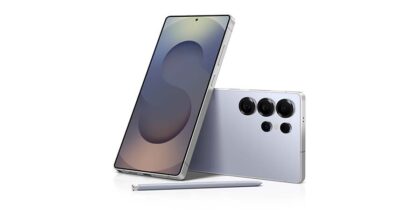Mobile phone stipends have become increasingly common over the past decade as businesses and public sector organizations have adopted Bring Your Own Device (BYOD) policies. According to a new study by Oxford Economics and Samsung, the vast majority of organizations with BYOD policies provide mobile reimbursements to employees, with most paying between $30 and $50 per month.
Organizations wanting to gain a deeper understanding of how much they should be spending for mobile stipends, as well as industry averages for device purchases, carrier connectivity costs, mobile management overheads and Mobile Device Management (MDM) software, can download the Maximizing Mobile Value study here and use this mobile cost calculator to obtain a detailed analysis.
What is a mobile stipend?
Mobile stipends are payments made to employees to reimburse them for the use of their personal mobile phone for work purposes. In some cases, the organization may reimburse an employee for the purchase of a new smartphone itself, but in most instances stipends are monthly payments that are intended to cover some or all of the employee’s mobile service plan. Compensation may be made through a payroll stipend, or through a telecom expense management (TEM) system.
Do most companies provide a mobile stipend to employees?
According to the 2022 Maximizing Mobile Value study, 98 percent of organizations provide a full or partial stipend to compensate BYOD employees for their mobile phone expenses. The percentage of companies providing stipends was up from 89 percent in 2018, indicating that companies increasingly view mobile devices as essential business tools.
The study also asked employees how they viewed using their personal phone for work. On average, employees estimated that 30.5 percent of their personal phone usage was work related. Asked whether they felt it would be unfair for their employer to expect them to use their personal phone for work without compensation, 46 percent agreed.
What is the average mobile stipend provided to employees?
Businesses and public sector organizations that provide mobile phone stipends for BYOD employees pay $40.20 per month on average, according to the Oxford Economics survey. This amounts to about $482 per year for each employee.
While some organizations — especially smaller companies — provide stipends of less than $30 per month, monthly reimbursements between $31 and $50 are most common. Around 18 percent of companies paid stipends of more than $50 per month.
How should you determine the amount of your mobile stipend?
In determining whether and how much to provide to BYOD employees as a mobile stipend, IT and business leaders should take a realistic look at their organization’s expectations around mobile usage. In the Oxford Economics survey, 53 percent of executives said employees cannot do their jobs effectively without a mobile phone, while 57 percent said mobile devices are essential to workflows.
If your organization views mobile devices as essential work tools and expects BYOD employees to be able to access work remotely from their personal device, that’s a good sign that you should be providing a stipend. Also, if you require BYOD employees to install an MDM client on their personal phone to enforce security protections, you should also strongly consider providing some form of compensation.
Time to reconsider BYOD?
In instances where a mobile phone is essential to employees daily work, it may be more beneficial from both a cost and productivity standpoint to provide a company-owned smartphone, instead of opting for BYOD and a stipend. The Maximizing Mobile Value study found that organizations who provide phones to employees are seeing the greatest benefit from mobile in terms of workforce productivity and information access. Providing devices also seems to correlate to increased growth and lower turnover.
BYOD policies also typically mean less control of the device, as a heavy-handed MDM implementation on a personal smartphone won’t go down well with users. At the same time, BYOD generally entails managing a more diverse fleet of devices — with many different models and operating systems — which add complexity for IT admins.
Mobile stipends for BYOD employees represent a significant investment. A mid-sized company with 1,000 employees, for example, would spend nearly $500,000 on stipends over the course of a year. Before committing to mobile stipends, take a holistic look at your mobile strategy, considering not just the costs, but the business value that you are able to derive.
If you’re considering a mobile deployment, here’s a comprehensive mobile roadmap to guide you. Want to update your BYOD policy? Follow our template to help you get started.








